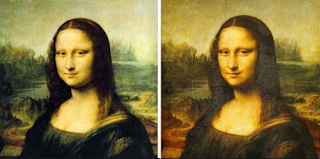Week 8: Nanotechnology and Art
In this weeks topic, Nanotechnology and Art we hear from a
different speaker, Dr. Gimzewski. Nanotechnology was first introduced by a man
named Richard Feynman in 1959. He did not coin the term “nanotechnology” in his lecture
“There’s plenty of Room at the Bottom”, but he suggested the idea that
scientist should narrow their focus to the smaller particles of items. Many
people were very skeptical of this idea until he reduced the size an Encyclopedia
by 25,000 times and copied it on a pin head. Feynman changed the laws of
physics and because of that it has impacted many products of todays world.
Courtesy of: http://www.azquotes.com/quote/751897
The first product I am going the discuss that
nanotechnology has impacted is beauty products. Things from hair products that
contain nanoemulsions that helps penetrate hydration deeper into the hair follicles
to sunscreens that micronize zinc and titanium to make them transparent and
less greasy and smelly so they can absorb into the skin easier. Beauty
companies like L’Oreal have made it their mission the use nanotechnology to not
only enhance your physical look, but to enhance the makeup you are putting on
your face. For example, many of their concealers double as a moisturizer containing
titanium dioxide and zinc oxide. Their anti-aging and anti-wrinkle cream
contain nanoparticles of UV filters and antioxidants.
Another area where nanotechnology has taken over
is in the production of sports equipment. Sports involving a stick of some
sort; baseball, golf, hockey etc. have been most affected by it because of the
different types of nanomaterial that go into making these sticks. There are
many different particles that weigh less, yet are still durable. Below is a
chart that explains the different necessities that go into making equipment.
With the recent advances in technology, scientist have been able to figure out
how to enhance sports performance through the object the athlete uses. Not only
have athletes themselves evolved over the years, the tools they used have been
forced to evolve as well.
Courtesy of: Wikimedia Commons
Gimzewski, Dr. "Nanotech for Artists Part
1." Youtube. UC Online Program, 21 May 2012. Web.
<https://www.youtube.com/watch?time_continue=1&v=q7jM6-iqzzE>.
Gimzewski,
Dr,. "Nanotech for Artists Part 4." Youtube. UC Online
Program, 21 May 2012. Web.
<https://www.youtube.com/watch?v=yHCuZetAIhk>.
“Nanowerk Emerging Technology News.” Nanowerk. N.p., n.d. Web. 10 May 2017.
“Nanowerk
Emerging Technology News.” Nanowerk
Nanotechnology portal. N.p., n.d. Web. 10 May
2017.
"Opportunities for Nanomaterials in Sporting
Applications – 2008-2013: Trend, Forecast and Competitive Analysis",
Research and Markets





I am really interested in the cosmetic example you gave. You detailed how nanotechnology has applied into the beauty products. It is true that nanotech provides great help to make the ingredients of products easier to absorb into skin and to have a soft, smooth look. However, the nano-ingredients, such as TiO2, potentially cause an adverse impact on human health. Some researchers who work in Tinkle's labhave have found that "at least some nano-particles can slip through the skin's tough outer layer." That is "they could potentially interact with the immune system or get into the bloodstream." Therefore, we should be really careful in the choice of beauty products which stated containing nato-tech.
ReplyDeleteHi Jordan, I think you brought up an interesting topic, which is the impact of nanotechnology on beauty products. Because of your detailed explanation, I am now more aware of the presence of nanoparticles in some of my most frequenly used cosmetic products such as concealers and sunscreens. It is also fascinating to know how nanotechnology has been applied to facilitate the development of more advanced sports equipment. Overall, I really enjoyed reading your blog because it is well written and informative.
ReplyDelete